Search titles
Displaying results 1 to 10 of 558.
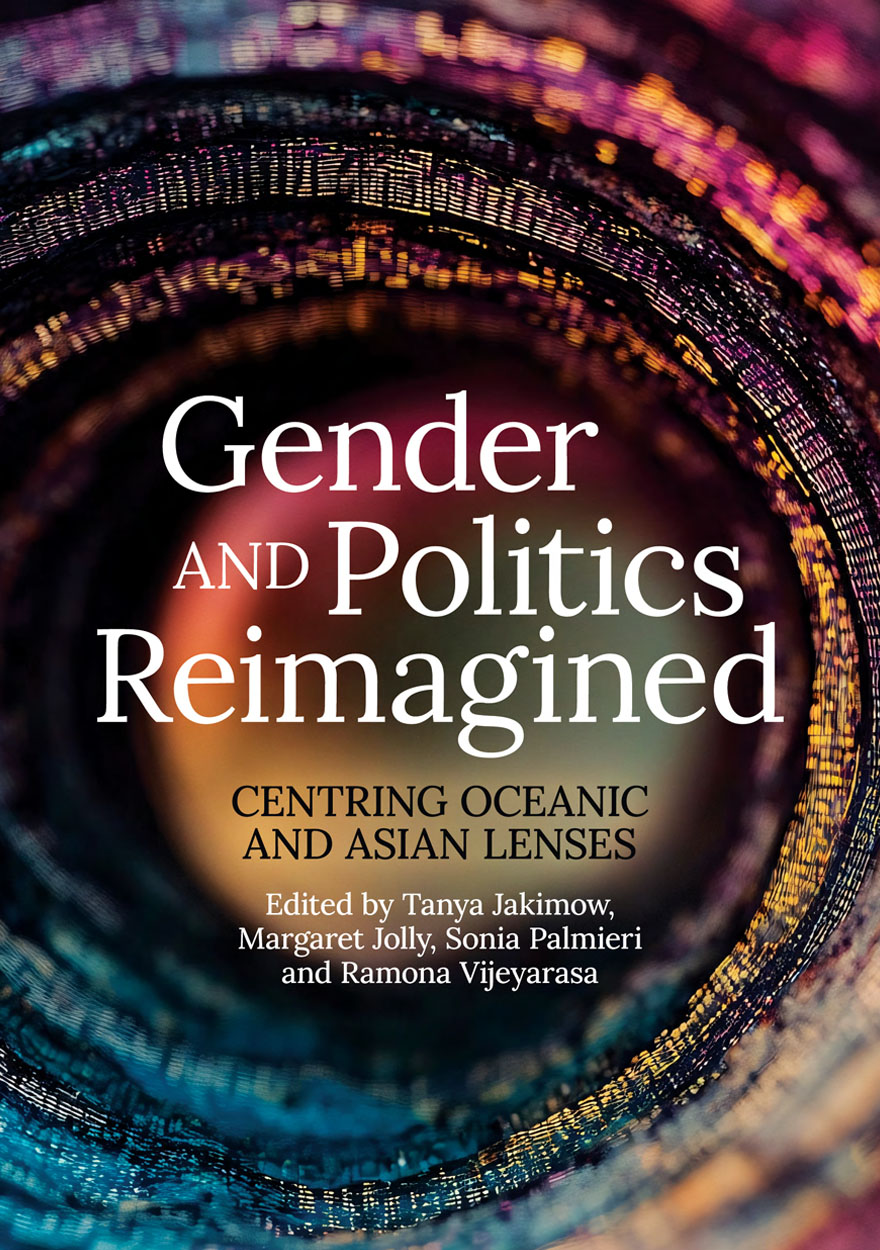
Gender and Politics Reimagined »
Centring Oceanic and Asian Lenses
Publication date: 2025
This timely collection reflects a coming together of academics, gender and development practitioners and activists to reflect on the gendering of politics. By centring Asia and Oceania and traversing numerous disciplines, the volume disrupts the illusion of certainty and clarity as to what is known about gender and politics. Individual chapters present specific research projects, while providing epistemological, theoretical and methodological reflections on how knowledge is produced and by whom, challenging the existing canon. The contributions collectively demonstrate the possibilities for theorising from Asia and Oceania to address the lack of diversity in political representation and leadership on a global scale, in which gender, race, class, caste, (dis)ability and sexual identity are powerfully interconnected.
Arising out of the Gender and Cultural Diversity in Politics: Australia, Asia and the Pacific workshop held at The Australian National University in 2022, this collection underscores the importance of fostering scholarship and mentorship in the academy. The diversity of authorship encompasses differences in ethnicity, nationality, sexuality and career stage, with an emphasis on the inclusion of authors from various Oceanic and Asian countries. The volume promotes academic practice as integral to social change, and social action as a form of knowledge production. As such, Gender and Politics Reimagined is sure to be a cornerstone in future scholarly and activist discussions.
Coming soon
Notify me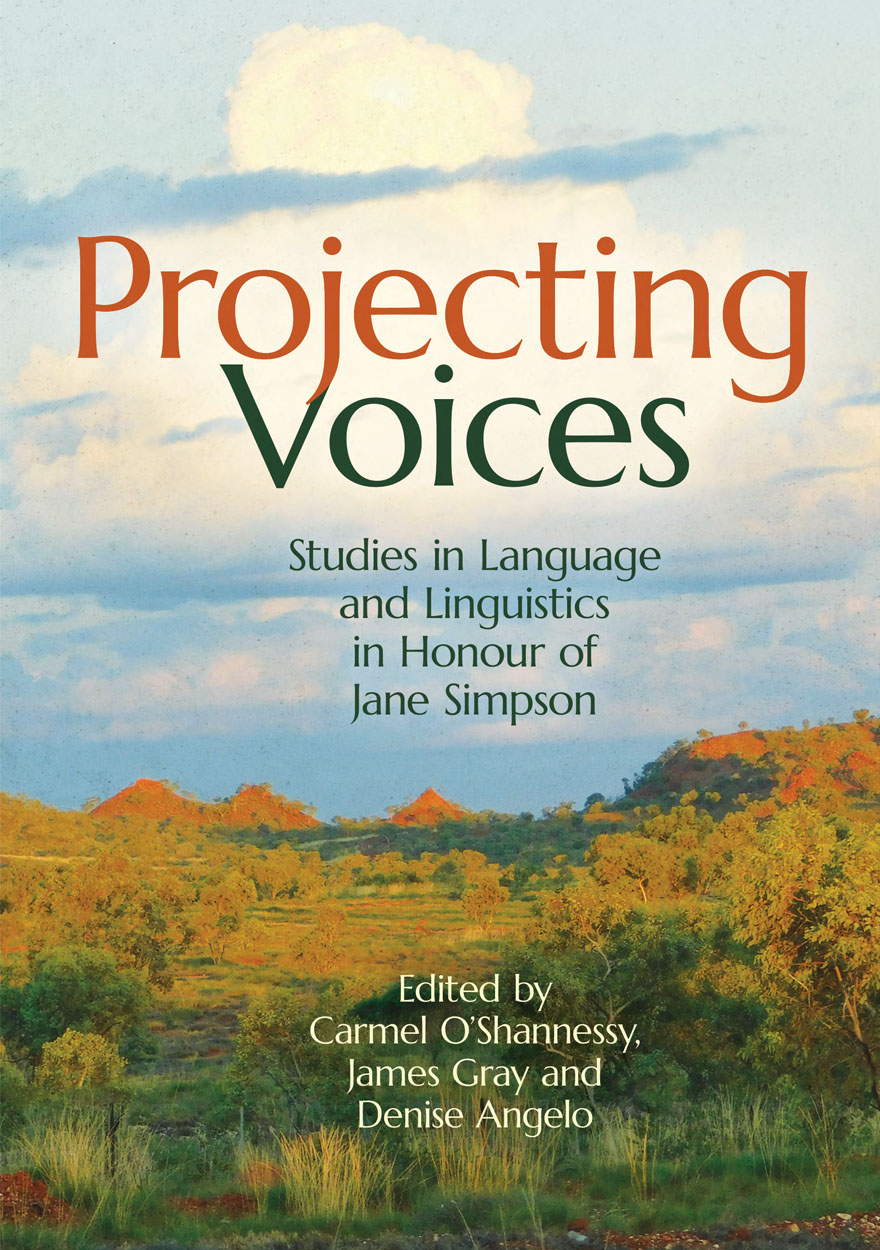
Projecting Voices »
Studies in Language and Linguistics in Honour of Jane Simpson
Publication date: 2025
This volume provides cutting-edge research on a wide range of questions in linguistics research, mostly centred on Australian Indigenous languages. Written by world-leading experts, the chapters take a fresh look at current questions in each topic, inspired by the work of Australian linguist Jane Simpson.
The chapters have implications for linguistic theory in the areas of historical linguistics, morphosyntax, semantics, the lexicon, language acquisition and issues in languages in education, and renewal of endangered languages.
This volume is essential reading for students and experienced researchers alike, with interests in theoretical and applied linguistics, especially in topics and issues related to Australian Indigenous languages.
Coming soon
Notify me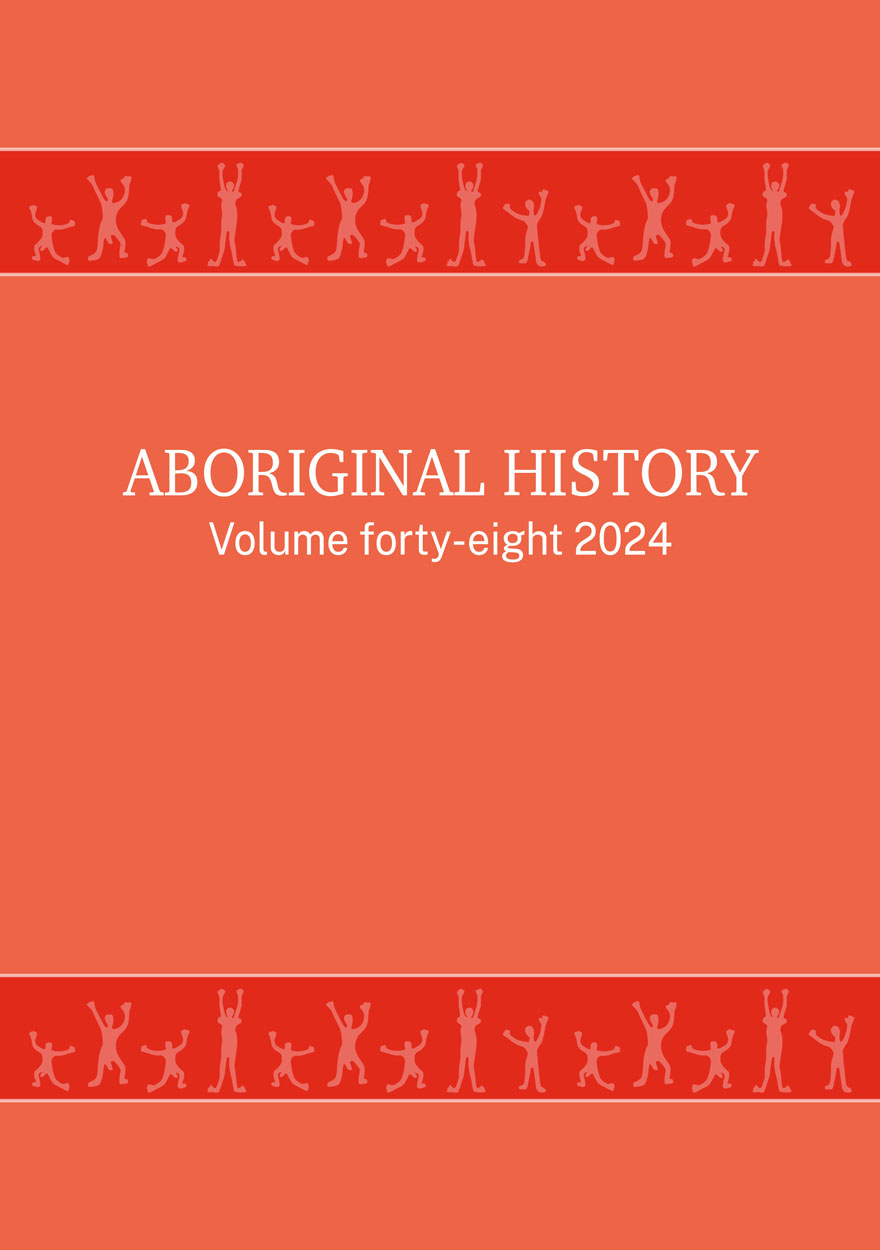
Aboriginal History Journal: Volume 48 »
Edited by: Crystal McKinnon, Ben Silverstein
Publication date: 2025
In this volume, Christopher Morton carefully traces the provenance of a Wiradjuri or Gamilaroi marara (tree carving) currently resting at the Pitt Rivers Museum in Oxford, considering its unfinished journey and the way it has been framed and recontextualised, as well as the ways it may experience a future return to good relation with and in Country. Julia Mortensen draws on oral histories of life and mobility in and around the Yumba – a ‘fringe camp’ at Cunnamulla – to narrate generations of autonomy from formal state control, reconsidering the Yumba as a centre of Aboriginal action and community strength: the centre, not the fringe. And on the 35th anniversary of the publication of Henrietta Fourmile’s landmark article ‘Who Owns the Past?’, Kirsten Thorpe returns to this work, centring the archival sovereignty that Fourmile sought and towards which First Nations archivists work today. This sovereignty is reflected in the following conversation between Gundungurra woman Kazan Brown and non-Indigenous historians Emily O’Gorman and Grace Karskens, transcribed by Natalie Osborne, which represents Gundungurra Country as storied, enduring and under threat.
The volume includes two memorial sections, remembering Frances Peters-Little and Lyndall Ryan and reflecting on their vital contributions to this journal and to the wider field of Aboriginal history. Alongside several book reviews, we present a review forum responding to Shannyn Palmer’s Prime Ministers’ Literary Award-winning Unmaking Angas Downs: Myth and History on a Central Australian Pastoral Station.
Coming soon
Notify me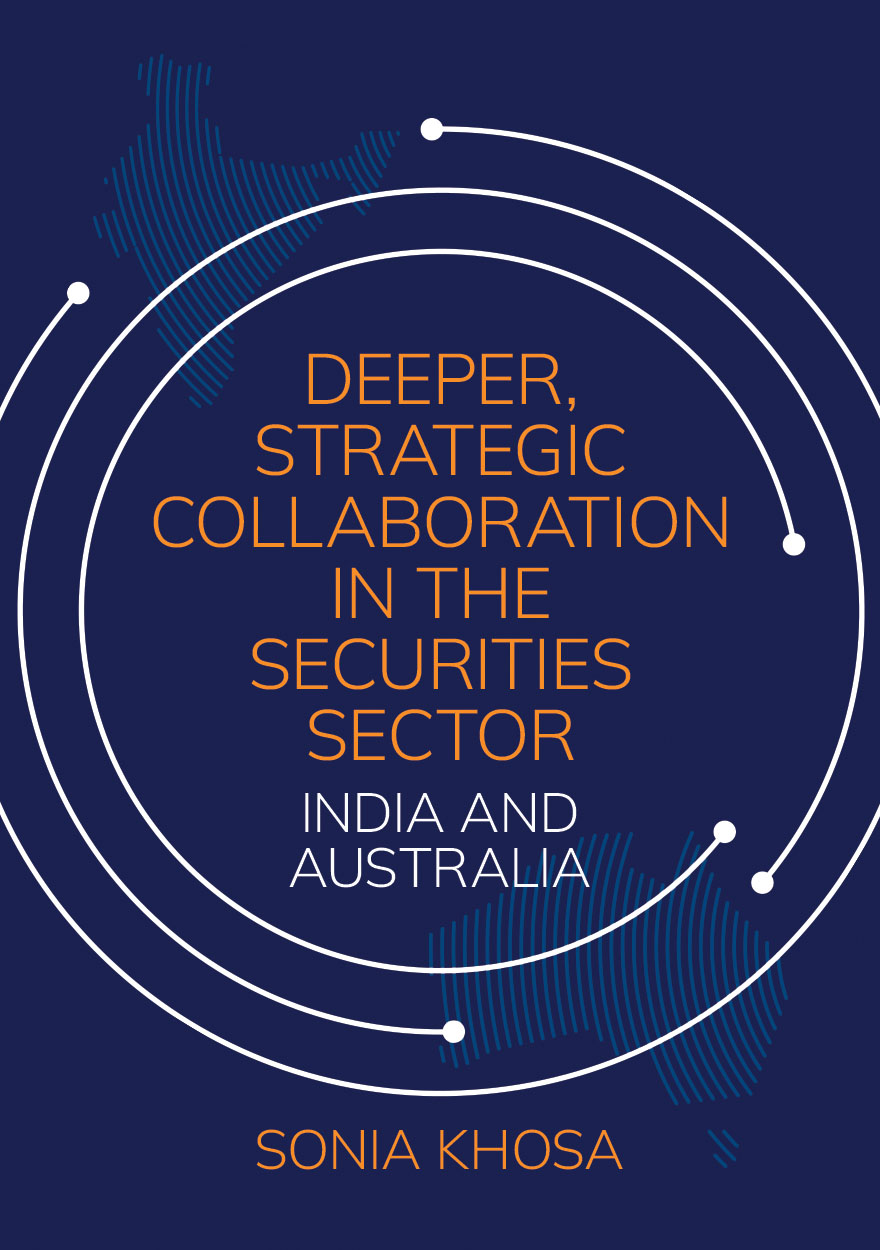
Deeper, Strategic Collaboration in the Securities Sector »
India and Australia
Authored by: Sonia Khosa
Publication date: 2025
In an era of globalised finance and increasing cross-border activity, regulatory cooperation has become essential for market integrity and development. This book examines the potential for strategic collaboration between India and Australia in the securities sector—two nations with distinct but complementary economic and legal frameworks. Through a comparative analysis of the Securities and Exchange Board of India (SEBI) and the Australian Securities and Investments Commission (ASIC), it evaluates alignment with International Organization of Securities Commissions (IOSCO) principles, focusing on supervisory powers, enforcement mechanisms and compliance effectiveness. The analysis identifies shared regulatory goals and governance principles, highlighting opportunities for bilateral cooperation.
Offering a roadmap for capital market integration and regulatory innovation, the book makes a timely contribution to international financial scholarship. It delivers practical insights for policymakers, legal scholars and regulators interested in forging resilient cross-border partnerships—both within the Indo-Pacific and beyond.
Coming soon
Notify me
Military History Supremo »
Essays in Honour of David Horner AM FASSA
Edited by: Joan Beaumont, Garth Pratten
Publication date: June 2025
Professor Emeritus David Horner AM FASSA is one of Australia’s greatest military historians and its fifth official historian of war and military operations. Few who undertake research in the field can do so without consulting his prodigious, authoritative and definitive publications. Serving for 25 years in the Australian Army before joining The Australian National University, Horner is the epitome of the soldier–scholar and has played a key role in establishing military history as an academic discipline in Australia.
This volume honours Horner’s long career of service to history and the nation. Authors pay tribute to Horner’s legacy by engaging with his scholarship, applying his conclusions to new case studies and contexts, reflecting and expanding on the subjects he addressed and the methodologies he employed, and pushing the boundaries of the discipline he was instrumental in founding. The breadth of Horner’s research is demonstrated by the subjects and themes they address, including strategic planning and policy, command, multinational operations, intelligence and defence policy. Military History Supremo both underscores Horner’s contribution to Australia’s military and intelligence history and highlights the vibrancy and relevance of the field today.

Strategic Imagination »
Essays in Honour of Brendan Sargeant
Edited by: Andrew Carr
Publication date: June 2025
This book examines the concept of ‘strategic imagination’ developed by Brendan Sargeant during his distinguished career at the Australian Department of Defence and later as a scholar at the Strategic and Defence Studies Centre (SDSC), The Australian National University. His tragic passing has left this powerful idea awaiting a proper examination. This volume seeks to provide that scholarly account and carry both the concept and Brendan’s legacy forward.
The book is organised in three parts. First, former officials like Dennis Richardson join leading scholars, including Mark McKenna, Anthea Roberts and Ian Hall, to explore the unusual conjunction of strategy and imagination, demonstrating its crucial role in effective scholarship and policy.
Second, analysts from Australia and worldwide examine how strategic imagination improves strategic practice by revealing hidden possibilities, catalysing essential conversations and challenging core assumptions.
The final section offers personal reflections from Brendan’s colleagues at the SDSC, providing a fitting tribute to his life and contribution. The volume also includes selections of Brendan’s own writing on strategic imagination, ensuring his voice continues to inspire scholars and officials to explore this rich and powerful concept.

Australian Journal of Biography and History: No. 9, 2025 »
Special Issue: Oceania Lives
Publication date: June 2025
This special issue of the Australian Journal of Biography and History, ‘Oceania Lives’, showcases a collection of writing and dialogue from an emerging group of Pacific scholars interested in rethinking Australia’s past and present through historical biography. While spanning multiple time periods, geographies, and communities, the issue draws its thematic coherence from a sustained exploration of the different ways in which Pacific peoples – in this case, South Sea Islanders/Australian South Sea Islanders, Papua New Guineans, Tongans, Pitcairners, West Papuans, Solomon Islanders and Fijians − have and continue to encounter Australian coloniality in its various forms.
The issue is notable for its inclusion of two dialogues, drawn from public events hosted in recent years by the Oceania Working Party of the Australian Dictionary of Biography. These dialogues, with their related emphases on indigeneity, relationality and knowledge production, set the scene for the entire special issue which aims to interrogate and explore the position of Pacific peoples on Indigenous lands and waterways which comprise contemporary Australia. Melinda Mann, Kim Kruger and Imelda Miller powerfully demonstrate how this can be done through their approaches to writing South Sea Islander biography while Lisa Hilli also reflects on her artistic and biographical method in conversation with Wendy Mocke about the FMI (or Daughters of Mary Immaculate) sisters of Vunapope, New Britain, who helped save hundreds of lives during the Second World War.
In addition to the dialogues, ‘Oceania Lives’ features four reflective pieces and three research articles. Using the Tongan narrative approach, talanoa-vā, Ruth (Lute) Faleolo and Emma ‘Ilaiū Vehikite use the written records of Wesleyan missionary Walter Lawry to reimagine the early 19th century voyage of Futukava to Australia. In ‘My grandmother is (not just) a small brown fragment’, Pauline Reynolds responds poetically to an archival note attached to a tapa or barkcloth donated to the Macleay Collections. Christopher Chevalier offers valuable reflections on the completion and publication of his biography of Solomon Mamaloni and Romitesh Kant pays special tribute to the work of Professor Brij Lal, a pioneer in Pacific biography and so much more. In their research articles, Talei Luscia Mangioni and Camellia Webb-Gannon bring to life the stories of Melanesian activist women Amelia Rokotuivuna from Fiji and the Black Sistaz from West Papua. Finally, Nicholas Hoare and Theresa Meki ask, ‘What ever happened to the Papua New Guinea Dictionary of Contemporary Biography?’ Their answers – like those of other contributors to this issue − point to both the challenges and opportunities in writing about and working with Oceania lives in 2025.

A Quiet Revolution in Indigenous Service Delivery »
New Public Management and its Effects on First Nations Organisations
Edited by: Deirdre Howard-Wagner
Publication date: May 2025
The government Indigenous service market that is now well entrenched in the public administration system has operated to marginalise First Nations people and First Nations organisations, who have had very little say, if any, over the last 20 years, about how government services are designed to meet their needs.
The chapters in this volume comprehensively describe and illustrate how the government Indigenous market, and the Indigenous service delivery system created around that market, have failed and why system change is needed.
The book offers the expertise of individual community-controlled First Nations organisations operating in urban settings in NSW, which variously operate as social enterprises, businesses, community development organisations, social service providers, representatives and advocacy organisations.
Concentrating on the experiences of individual First Nations organisations allows us to examine the complex, layered Indigenous service system as a multi-jurisdictional phenomenon on the ground in an urban context.
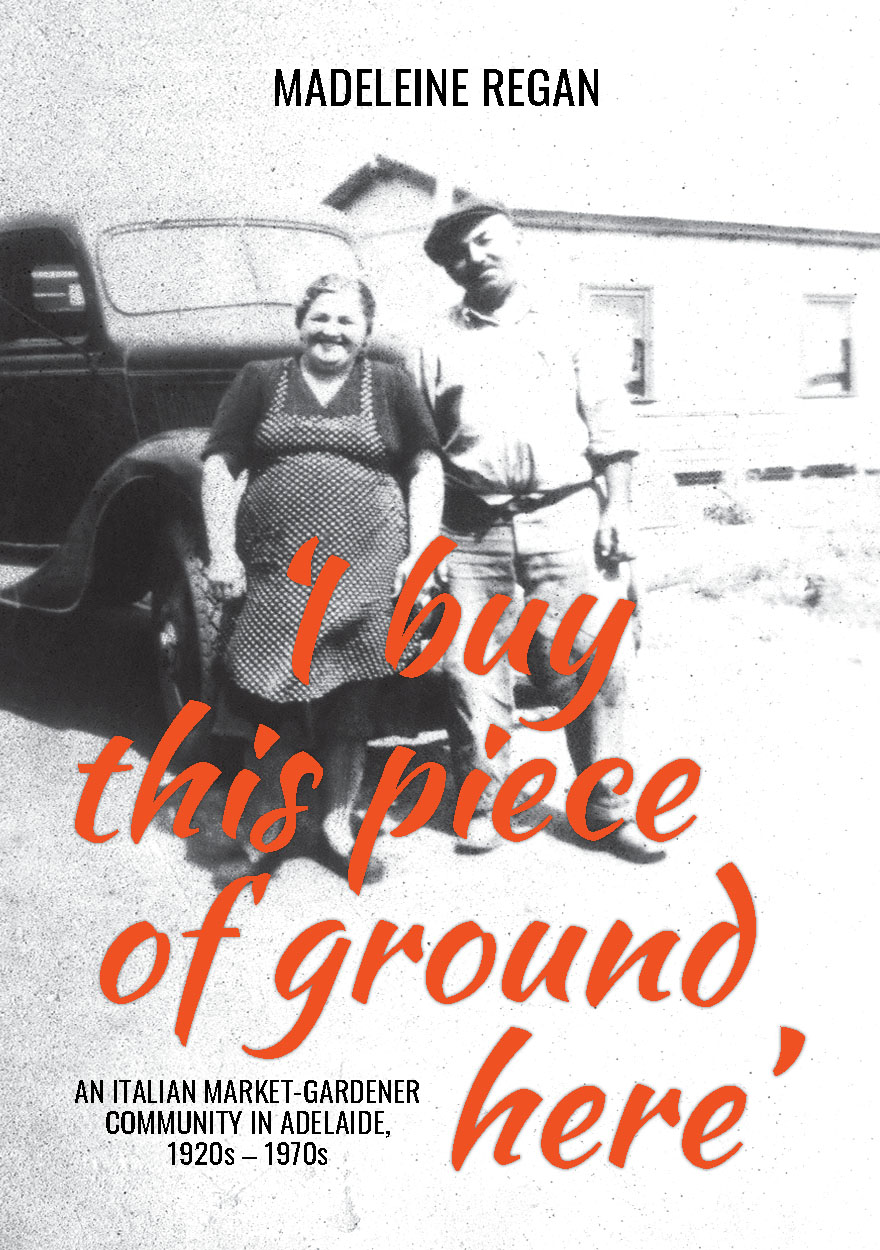
‘I buy this piece of ground here’ »
An Italian market-gardener community in Adelaide, 1920s–1970s
Authored by: Madeleine Regan
Publication date: May 2025
‘I buy this piece of ground here’ is a group biography that examines the lives and work of a cohort of Italian migrant families from the Veneto region who arrived in Australia in the 1920s and formed a new community and identity as market gardeners in outer suburban Adelaide.
This book investigates the settlement processes in a period of Australian migration history often overlooked in favour of post–World War II studies of mass migration and multiculturalism. It considers the impacts of the Depression, fascism, World War II, the White Australia environment that excluded southern Europeans and, ultimately, the suburbanisation that overtook their community.
Drawing on 65 oral histories with sons and daughters of the first generation, archival and published records, the narrative reveals what it felt like to work market gardens that became economic and emotional anchors for a new community. The first generation raised families, worked and bought the land, planted vegetables, bartered for glasshouses, sold produce at market, celebrated in packing sheds and established a stable, resilient community between the wars.
The Veneto families developed successful commercial market gardens and created a self-contained village or paese in a small area west of Adelaide. Withstanding marginalisation, the market gardeners lived and worked together in a small community, prospered and created an economy, a sense of belonging and a future for their children.
‘A formidably detailed piece of research and the product of a most fruitful community collaboration.’
—Frank Bongiorno AM, Professor of History, ANU

Because COVID … »
Pandemic Responses, Rationales and Ruses
Edited by: Shirley Leitch, Sally Wheeler
Publication date: April 2025
The norms of everyday life were often cast aside during the pandemic years. States shut their borders, mothballed their economies, and locked down their cities. Individuals put family life, career goals, travel plans – even medical treatments – on hold. In Australia, a Government elected on a platform of neo-libertarian freedom and debt reduction, spent like Keynesians while curtailing even basic freedoms. Some citizens protested but most accepted curfews, mask mandates and the shuttering of schools and workplaces in exchange for the promise of safety.
Across every sphere of life, ‘Because Covid’ became an accepted shorthand, serving as both a response and rationale for previously unthinkable actions. Yet, it is always a mistake to take such things at face value.
Contributors to this book look beyond the rhetoric of Australia’s COVID-19 responses to consider where the pandemic has taken us as a nation. We examine economic policy, bioethics, freedom of speech, freedom of movement, global supply chains, public value science, violence against women, the experiences of Indigenous communities, news media practices, the arts sector, historical precedents, and more. What can we learn about managing future risks? What are the consequences, intended or not, of particular policy interventions? Are there new opportunities as normalisation kicks in? Our goal is to offer broad-ranging insights into the Australian experience at the very time the nation is beginning to learn how to live with COVID-19.



